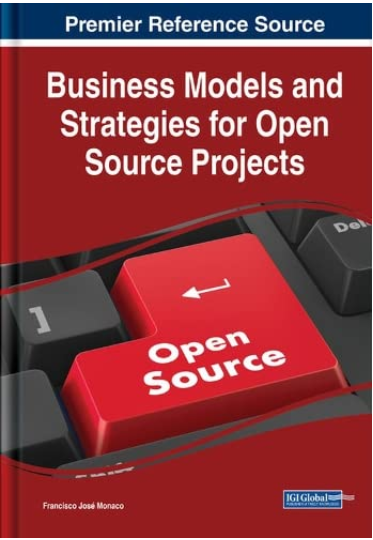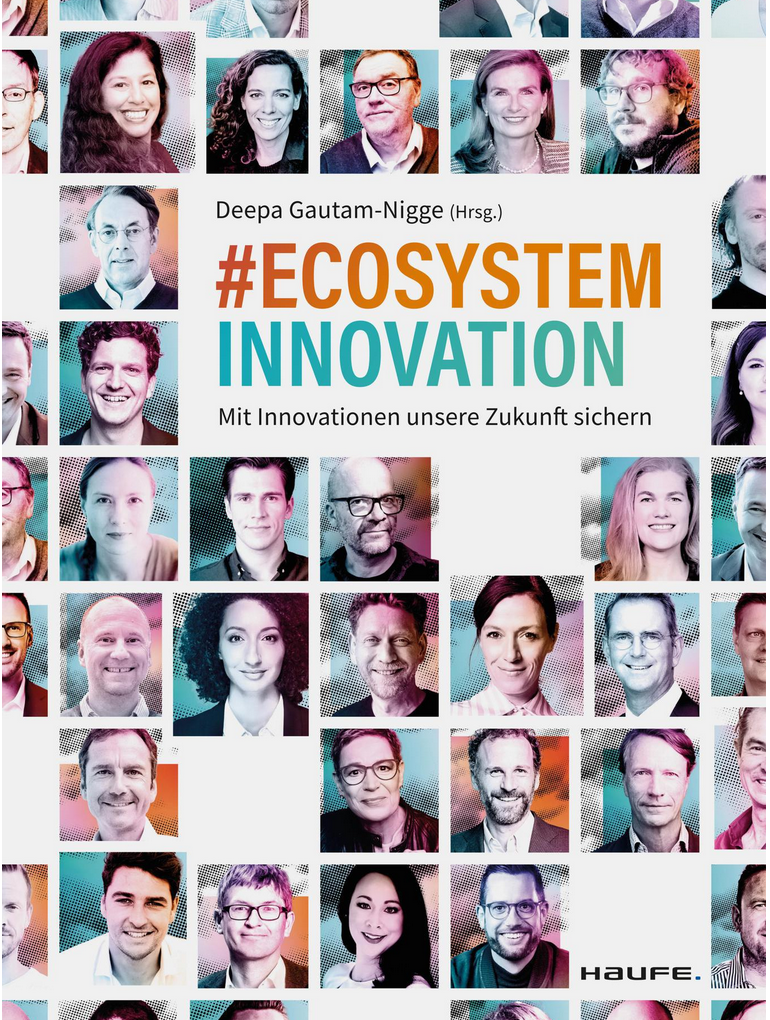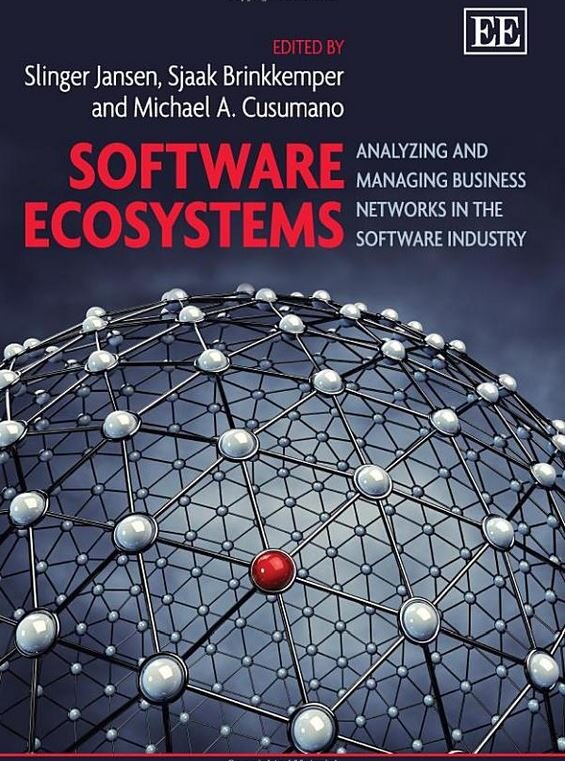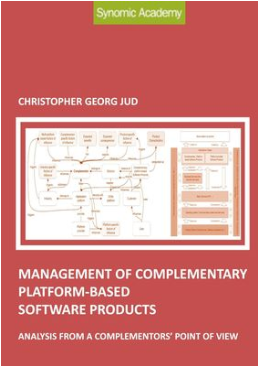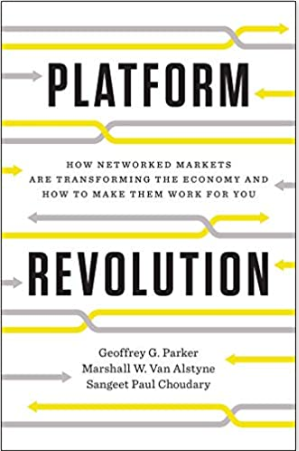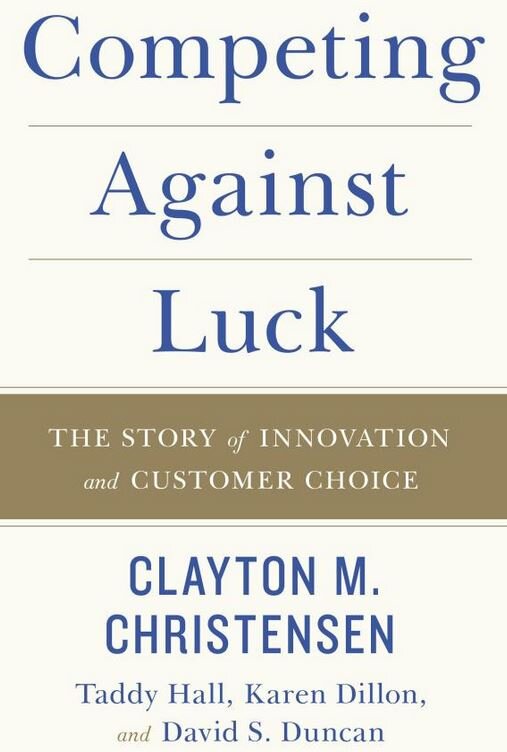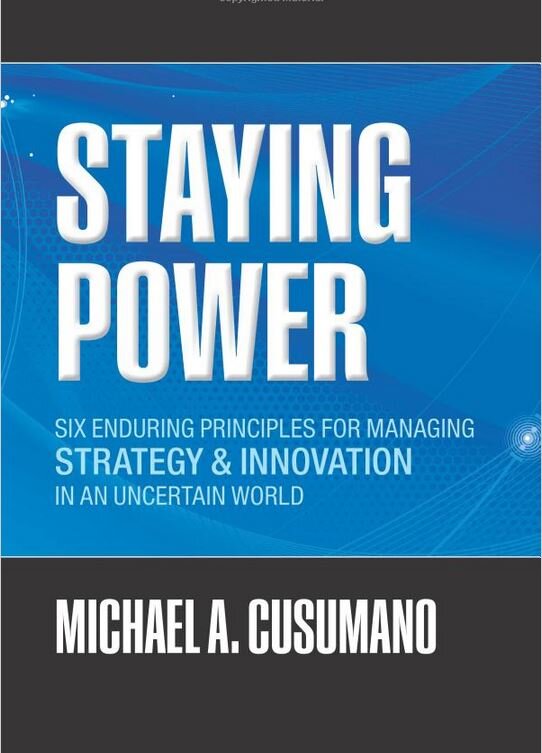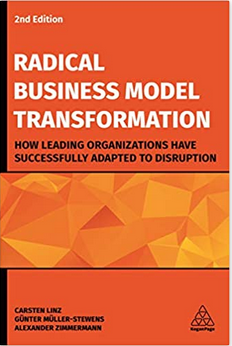
NEWS
OEM business model: join the European workshop on software ecosystems
The European Workshop on Software Ecosystems is an annual event which connects top notch researchers and business professionals in the field of software and platform ecosystems as well as business networks. Here is an example of a topic we will discuss at the event.
OEM
In an OEM scenario the software vendor provides OEM software to the software partner. The software partner sells the OEM software as part of his solution. Usually, the software partner charges no price for the OEM software, but for his own solution. This is the key difference between OEM and resell.
The software vendor delivers the OEM software to the partner, which pays a license fee and maintenance fee to the software vendor. The license fee for the OEM might be a share of the revenue of the partner product containing the OEM software. Or it might be a constant fee that applies per copy of the OEM software shipped to the customer.
Business Model Canvas for OEM software
In a generic view, the value proposition of outbound OEM for a customer (software vendor) is that the customer saves development cost and time and gets a quality product.
For customer segments, this business model is generally limited to software vendors but might also apply to hardware vendors shipping hardware with embedded software. Based on the specific functionality of the OEM software, it might be further limited to specific software vendors. Customer relationships to software vendors using the software are important. As a consequence, the network of partner companies is the main channel.
More details and background information can be found in these books:
Open Source Business Models in action!
The European Workshop on Software Ecosystems is an annual event which connects top notch researchers and business professionals in the field of software and platform ecosystems as well as business networks.
Commercial use of open source
For a commercial company, Open Source Software is software that is licensed to that company under an open source license. The commercial company may make use of the open source, like usage or redistribution of the open source free of charge, but it also has to fulfill the obligations, like delivering a copy of the license text with the software.
So the rights and obligations have to be analyzed diligently to make sure there is no violation of the license terms.
Suppliers of open source software
Open Source software can be supplied by a community or by a commercial company. We speak of community open source and commercial open source respectively.
For community open source, a community of people provides creation, maintenance and support for an open source software. In most of the cases the community provides these services free of charge.
There are, of course, differences between a company and the open source community. These differences are important to understand, because they influence a customer´s supplier decision and they also create niches for companies to establish a business in that niche.
Like the topic? Participate in our workshop tickets here
Commercial open source vs. community open source
So a customer might decide for commercial open source if he needs customized license terms, runs open source in a mission-critical environment and thus needs service level agreements in support or if he needs maintenance provided in a different way than via the open source community.
In many business contexts it makes also sense to have liability and warranty provisions from a supplier when using open source. In most of the existing open source licenses there is exclusion of any warranty or liability (3). This is another reason why companies might choose commercial open source over community open source.
Classification of open source business models
Based on a classification of business models (Weill et al.) we will have a look at open source business models.
Open source usually is free of charge, but that does not necessarily mean there is no compensation for using the open source component.
The next figure shows a classification of generic business models. The business models relevant for commercial open source business are marked in bold. In this general classification of business models, software classifies as an intangible product, see the corresponding column “Intangible”. Software can be created or written (“Inventor”), distributed (“IP Distributor”) or licensed or rented to customers (“IP Lessor”). In addition, the customer needs services to run and maintain the software, like implementation, support and maintenance services. These classify as “Contractor” business. We assume here that all open source businesses make use of at least a subset of these four business models.
Like the topic? No matter if it is a community or a commercial software vendor, one or many of these business models are applied. By choosing a specific selection of business models, a so-called hybrid business model is created. Creating a hybrid business model means combining different business models with their specific goals, requirements and cost structures.
Since these business models are models on a type level, there might be different implementations of how a certain business model is run. An open source community might run the Inventor business for creating software in a different way (leveraging the community) than a commercial software vendor (leveraging a development team), from a process as well as from a resource perspective. But on a type level, both run the same type of business called Inventor.
So going forward, we will analyze commercial and community open source business models as a selection of a subset of the business models identified here: Inventor, IP Lessor, IP distributor and Contractor.
Like the topic? Participate in our workshop tickets here
Community open source business model
The open source community business model usually makes use of the following business models: Inventor, IP Lessor and Contractor.
For the community, the Inventor business is what the community is most involved in. It is about creating open source software and engaging with the community members to coordinate the work and collect the contributions of the community members.
The IP Lessor business is also important for the community. The IP lessor business defines the terms and conditions of the open source license and makes the software available to customers. The license is defined by the community and all customers using the software have to comply with it. In some cases, there are multiple different licenses for an open source software that a customer can choose from.
The Contractor business contains all human services to customers. The community typically provides these via email and they contain services like maintenance, support, translation for country specific versions and the like. They are all carried out by community members. In almost every case, the customer does not pay for these services, but the customer has no rights to enforce any of these services and he does not have service level agreements, like a definition of minimum answer time for support incidents.
The community can serve two types of customers: software vendors and (end) customers. For software vendors, the open source community works as a supplier of software, for the customer, the open source community works as a software vendor licensing software to the customer.
These two relationships differ in the way that customers and software vendors might make use of the software. Customers usually license the software for internal use only. Software vendors license software for internal use and/or for distribution to customers. Often open source software is included in commercial software and provided to customers by the software vendor. In this case, the software vendor has to make sure he complies with all licenses of all open source software he is including in his software product.
Commercial open source business models overview
In the last section we described the community business model, now we turn to the commercial open source business model. Figure 4 shows the typical business models implemented by commercial software vendors. As mentioned before, a commercial software vendor does not have to implement all of these business models, but can rather build a unique business model by selecting a subset of available business models. One basic difference to community open source is that the IP Distributor business model is an option for commercial companies.
The history of commercial open source companies shows that in the beginning the companies focused on services around open source software, which matches the Contractor business.
The next step was to build distributions for open source software, like e.g. for Linux. This matches to the IP Distributor business model.
Today, we find all kinds of hybrid business models around open source. Companies are building software and donate it, completely or partially to the open source community (Inventor business model). Commercial software vendors often package or change or extend existing community open source software, so the community acts as a supplier of open source software to the software vendor. In some cases the software vendor does not use existing open source software from a community, but chooses to offer its proprietary software under a dual licensing strategy, e.g. under a commercial and an open source license.
Commercial services for open source
Since open source licenses are free of charge, commercial companies first and foremost focused on providing services around open source software. The expectation was simply that customers would still need services and since the license was free, that customers would have more money to spend on services.
Commercial open source companies provide the following services for open source software: Maintenance, Support, Consulting and Extension or adaption of open source software to a customer´s needs.
Maintenance services consist of the following activities: building future versions, bug fixes and upgrades and providing them to the customers.
Support services contain of accepting, maintaining and resolving incidents that the customer has while using the software.
Consulting services mean planning and executing the installation and go-live of customers´ system landscapes containing the software.
Extension or adaption of open source software based on customer´s requests is designing, programming, testing and delivering open source software that has been modified or expanded. Examples for extensions and modifications are:
Functional Extensions for open source applications with country-specific functionality or customer specific functionality;
Extending the usage scenarios for open source to additional countries by adding additional translations of user interfaces;
Adapting open source software means to make open source software run on customers´ hardware and software platforms.
Summary and outlook
The evolution of open source and commercial open source business is still underway. In the future we will see additional varieties of open source business licenses, such as in open source hardware or designs, and new open source business models, like in open source on demand applications or open source software in cloud environments.
What are the success factors In changing existing businesses to platform businesses?
The vital elements for achieving success encompass the establishment of an ecosystem, the generation of network effects, the application of data-driven decision-making, a willingness to engage in collaborations, and a focus on user-centric design. Instances of actual enterprises that have effectively shifted to platform-based models include the following:
1. Amazon: Amazon's transition involved the transformation from a mere online vendor to a platform-based entity through the opening up of its marketplace to external sellers, thereby establishing a vast array of products and services.
2. Apple: Apple's evolution entailed a shift from being product-centric to operating as a platform-based organization with the introduction of the App Store, which allowed developers to create applications for iOS devices and encouraged the formation of network effects.
3. Airbnb: Airbnb's progression towards a platform model was marked by the facilitation of connections between hosts and guests, the utilization of user data to customize experiences, and the cultivation of network effects within the realm of hospitality.
4. Uber: Uber's evolution from a conventional transportation service to a platform-based entity involved the linking of passengers and drivers through its application, the use of data for implementing flexible pricing strategies, and the global expansion of its services.
5. Salesforce: Salesforce's shift to a platform-centric organization was catalyzed by the implementation of a cloud-based CRM platform that interfaces with a variety of third-party applications, thereby fostering ecosystem growth and delivering data-driven insights for enterprises. These illustrations underscore how successful businesses have harnessed crucial factors to make the transition to platform-based operations, thereby stimulating growth and fostering innovation.
Like the topic? Participate in our workshop tickets here
More details and background information can be found in these books:
OEM business model: join the European workshop on software ecosystems
The European Workshop on Software Ecosystems is an annual event which connects top notch researchers and business professionals in the field of software and platform ecosystems as well as business networks. Here is an example of a topic we will discuss at the event.
OEM
In an OEM scenario the software vendor provides OEM software to the software partner. The software partner sells the OEM software as part of his solution. Usually, the software partner charges no price for the OEM software, but for his own solution. This is the key difference between OEM and resell.
The software vendor delivers the OEM software to the partner, which pays a license fee and maintenance fee to the software vendor. The license fee for the OEM might be a share of the revenue of the partner product containing the OEM software. Or it might be a constant fee that applies per copy of the OEM software shipped to the customer.
Business Model Canvas for OEM software
In a generic view, the value proposition of outbound OEM for a customer (software vendor) is that the customer saves development cost and time and gets a quality product.
For customer segments, this business model is generally limited to software vendors but might also apply to hardware vendors shipping hardware with embedded software. Based on the specific functionality of the OEM software, it might be further limited to specific software vendors. Customer relationships to software vendors using the software are important. As a consequence, the network of partner companies is the main channel.
More details and background information can be found in these books:
What are the 5 key success factors of cloud platforms that offer artificial intelligence?
The European Workshop on Software Ecosystems is an annual event which connects top notch researchers and business professionals in the field of software and platform ecosystems as well as business networks. Here is an example of a topic we will discuss at the event.
The 5 key success factors are scalability, security, flexibility, integration capabilities, and cost-effectiveness. Examples:
1. Scalability - AWS offers scalable AI services like Amazon SageMaker, allowing users to easily scale AI models based on demand.
2. Security - Microsoft Azure provides robust security features for AI applications, ensuring data protection and compliance with industry standards.
3. Flexibility - Google Cloud Platform offers a wide range of AI tools and APIs, providing flexibility for developers to build custom AI solutions.
4. Integration Capabilities - IBM Watson integrates seamlessly with various cloud platforms, enabling AI applications to work cohesively with other software systems.
5. Cost-Effectiveness - Oracle Cloud offers cost-effective AI services, allowing businesses to leverage AI capabilities without incurring high expenses.
Like the topic? Participate in our workshop tickets here
More details and background information can be found in these books:
How can you foster innovation in software ecosystems - six examples
Innovation is at the heart of every successful software ecosystem. Fostering a culture of innovation not only drives growth and success but also creates a competitive edge. Here are six examples of how you can foster innovation in software ecosystems:
1. Encourage a Collaborative Environment:
Create spaces for open communication and idea-sharing among software development teams. Collaboration fosters creativity and leads to innovative solutions.
2. Invest in Research and Development:
Allocate resources to R&D efforts to explore new technologies, methodologies, and trends. This investment can yield groundbreaking innovations.
3. Embrace Agile Methodologies:
Adopt agile practices to enable quick iterations, adaptability, and continuous improvement. Agile methodologies promote innovation by allowing teams to respond to change and deliver high-quality software.
4. Promote a Culture of Learning:
Encourage continuous learning and skill development among team members. By staying updated on the latest industry trends, individuals can bring fresh perspectives and innovative ideas to the table.
5. Support Hackathons and Innovation Challenges:
Organize events that challenge developers to ideate and create innovative solutions within a limited timeframe. Hackathons drive creativity and often result in pioneering software concepts.
6. Foster Entrepreneurial Mindset:
Encourage developers to think like entrepreneurs and take ownership of their projects. This mindset cultivates a sense of ownership and drive to innovate.
By implementing these strategies, software ecosystems can create an environment that nurtures creativity, experimentation, and advancement, ultimately leading to groundbreaking innovations.
Like the topic? Participate in our workshop tickets here
Why don´t you choose one of the following topics to continue:
Disruptive business models: join the European workshop on software ecosystems
The European Workshop on Software Ecosystems is an annual event which connects top notch researchers and business professionals in the field of software and platform ecosystems as well as business networks. Here is an example of a topic we will discuss at the event.
Software industry and disruption
The software industry is all about disruptive business models. The key question remains: How do you plan and build disruptive business models? What are examples of disruptive business models? What did companies with distruptive business models do different than other companies? How can a company offer for the prize of zero? All of these questions can be answered by looking at disruptive business models.
Business model canvas and disruption
Let us adress these questions based on the business model canvas. The business model canvas is a well known approach by Osterwalder to model business models. Osterwalder published his approach in the book Business Model Generation: A Handbook for Visionaries, Game Changers, and Challengers.
A business model is described there on a "canvas" that shows e.g. the value proposition, cost, channels, revenue, suppliers, key resources and key partners.
Here is an example of Google´s search business on the business model canvas:
Where in the business model can disruption happen?
Now that we know the business model canvas, we can take disruption mechanisms and put them into the canvas. I use the information from Mark W. Johnson´s ideas on seizing the white space and put them on the canvas. And i use information from Profit from Software Ecosystems book.
Let me explain some of the boxes below.
Offer standardized low price version of high price product
There is a high price product, like secure data rooms. You build disruptive business models by offering that product in a standardized low price version. Examples i like are
UberX, a service from Uber that offers cheap transportation services
Motel One which is a motel chain that offers very affordable overnight stays
Securedocs, who disrupt the secure data room industry by offering a cheap yet safe data room for companies.
Shop at home with device
Nothing is more convenient than shopping at home. Technology can put that convenience to a new level.
Here are my most-liked examples:
Amazon has invented Amazon Fresh, a device that can scan barcodes of products at home or can listen to your wishes. Just say: chocolate sprinkles and the sprinkles will be at your door the next morning.
Amazon Fire scans for products that can be ordered, from Amazon, of course. no more searching for names or products in catalogs. scan, shop, done.
hybris Commerce Suite: lets you shop on any device (smart tv, Ipad, Phone)
Integrate and combine channels
In some industries there are opportunities in integrating and combining channels to build disruptive business models. No matter how you reach customers to sell goods, no matter where customers turn their attention, you might leverage all these channels as one.
Here are my favorites:
Stylight social shopping. Stylight has integrated normal people showing off purchased apparel in social networks with a shopping experience. Pictures of these people can appear in the shop and items can be ordered right away.
Prize of zero fed by other revenue streams
There is no better way to disrupt than offering a product or service for a price of zero. But you have to make sure you get some compensation or you finance that business model with revenues from your other business models. Advertising revenue has been stressed a lot in the software business for this purpose, but it only works in rare cases. So, which other sources of revenue to fund a low price are there? Here are my examples:
Google search. The service offered by Google is free. If you look at it more carefully, there is a compensation. it is data about the interest and the searches a user starts. This data is sold to advertisers. Revenue from advertising feeds free search.
Communities instead of sales force
Outsourcing for the prize of (almost) zero and scaling your salesforce dramatically. These are the benefits of leveraging product communities for supporting, maintaining and even selling your products. Network effects can accelerate this effect even more. Examples are:
Nespresso community
Skype was and is mostly promoted by its community. the network effects of having additional people join.
Open Source communities
Do more to adress the job
Just do a little more than your competition. Sounds easy, but it might take some hard thinking to deliver. Here are examples:
German epost does not only store your mail while you are away from home, they will scan all incoming letters and provide them online for you to look at it.
Life is good. Social retail. Shopping is great. Might be even greater if you are doing good while you are shopping.
Join the European workshop on software ecosystems to learn more.
Literature
Content on this site comes from the following book and the ones in the gallery:
Mergers and Acquisitions in the Software Industry
other background literature is:
Osterwalder, Business model generation
Mark W Johnson, Seizing the white space
R. Meyer, K.M. Popp, Profit from software ecosystems
Current hot research topics in software ecosystems and platforms
In the current landscape of research concerning software ecosystems and platforms, there is a notable surge in interest towards various trending subjects.
A significant focal point revolves around the evolution and dynamics of software ecosystems, investigating the progression of these intricate systems comprising interdependent software elements and entities over time. Scholars are immersing themselves in the underlying mechanisms steering ecosystem development, including platform governance, ecosystem configuration, and the involvement of key stakeholders. Another pivotal subject entails platform ecosystems and their influence on innovation and competitive dynamics. Academics are scrutinizing how the dynamics of platforms impact strategies for innovation, competitive interactions, and the generation of value within ecosystems.
Grasping the interconnectedness among platform governance, ecosystem structure, and innovation is paramount for organizations aiming to excel in digital markets. Moreover, the advent of novel technologies like blockchain, artificial intelligence, and the Internet of Things is reshaping software ecosystems and platforms. Researchers are probing into how these technologies disrupt conventional ecosystems, forge fresh avenues for collaboration, and affect ecosystem governance and sustainability.
Furthermore, the ascent of open-source software and collaborative development models is reshaping the terrain of software ecosystems. Investigations are analyzing the ramifications of open-source communities, decentralized development processes, and the contribution of participants in shaping ecosystem dynamics and platform advancement.
On the whole, the realm of research on software ecosystems and platforms is dynamic and interdisciplinary, encompassing realms such as network theory, innovation management, digital platforms, and software engineering. By tackling these trending subjects, researchers aspire to offer insights that can aid organizations in navigating the intricacies of contemporary software ecosystems and harnessing platforms for sustainable expansion and innovation.
Like the topic? Participate in our workshop tickets here
More details and background information can be found in these books:
Google business models and revenue sources #ewseco
Google functions under diverse business models and revenue streams. Presented here are five illustrations:
1. The primary source of revenue for Google is the advertising displayed on its search engine and various platforms such as YouTube. In 2020, Google's advertising revenue reached approximately $147 billion, making a substantial contribution to its profits.
2. Cloud Services: Google Cloud provides cloud computing services to enterprises, generating revenue through subscription-based frameworks. The revenue from Google Cloud in 2020 was about $13 billion, displaying an increasing impact on profits.
3. Sales of Hardware: Google markets hardware items like Pixel smartphones, Nest smart home gadgets, and Chromecast. The revenue from hardware sales in 2020 was about $10 billion, with profit margins varying among product categories.
4. Play Store: Google gains revenue from the Play Store by receiving a share of app sales and in-app transactions. The revenue from the Play Store in 2020 was estimated at $10 billion, with substantial profit margins attributed to the digital essence of the platform.
5. Licensing and Other Services: Google also derives revenue through licensing contracts, collaborations, and other services such as Google Workspace (previously known as G Suite). These services collectively contribute to Google's overall revenue and profits.
Like the topic? Participate in our workshop tickets here
More details and background information can be found in these books:
The top 5 global companies with aggregator business models
The European Workshop on Software Ecosystems is an annual event which connects top notch researchers and business professionals in the field of software and platform ecosystems as well as business networks. Here is an example of a topic we will discuss at the event.
The top 5 global companies with aggregator business models, revenue, and growth rate in the last 5 years are:
1. Amazon - Revenue: $386 billion (2020), Growth Rate: 21% (2020-2024).
2. Uber - Revenue: $14.1 billion (2020), Growth Rate: 25% (2020-2024).
3. Airbnb - Revenue: $3.4 billion (2020), Growth Rate: 30% (2020-2024).
4. Booking.com - Revenue: $15.1 billion (2020), Growth Rate: 18% (2020-2024).
5. Expedia - Revenue: $11.7 billion (2020), Growth Rate: 15% (2020-2024).
Like the topic? Participate in our workshop tickets here
More details and background information can be found in these books:



